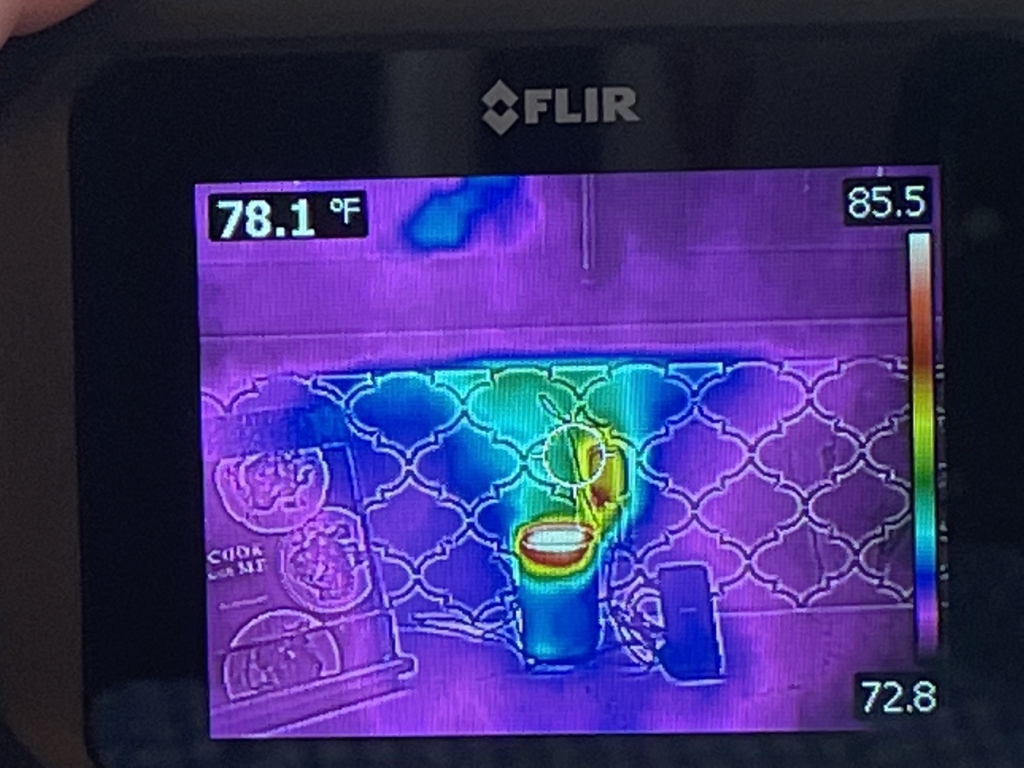
It is without a doubt that the summer climate in the southern USA is hot and humid. For 1000 years, that was just a given and simply something to be endured until the fall. Then they invented HVAC, and it all changed. Cooling and conditioning the air in one’s home delivered a respite from the often unrelenting heat and humidity.
Our crew at Simplified Construction builds quality homes. We pride ourselves on both the standard of construction and the standard of insulation that we apply. We often employ Structurally Insulated Panel Systems (SIPS) in our construction. This gives excellent insulation, typically R40 in the walls vs. the R15 required for code, great wind resistance, and minimizes air exchange (aka leakage).
Airtight homes are not a panacea of all ills. They are very quiet and comfortable but can tend to trap moisture from human and domestic sources. Air exchange is reduced, and overall the HVAC runs less. The system becomes less likely to remove that water, and it can result in mold issues. We know all about this. Where we expect high occupation loads, we will fit a dehumidifier and enthalpy exchange unit, designed to allow both heat energy and moisture energy to be exchanged. It runs in parallel with the HVAC and maintains a stable and comfortable humidity level in the home. Job done.
Not quite. Even with these heightened steps to manage air exchange, we ran into a problem with our home, recently completed in Palmetto Bluff, SC. The ceiling to the master bedroom was paneled in 6″ Southern Yellow Pine, tongue & groove, with a beadboard molding. It began to buckle along the length causing several planks to “peak” away from the rafters. This was worse in the summer and worse on one side than the other. We initially believed it was shrinkage of new timbers but on an investigation, not so. We also found it was damp behind the boards and on the inner surface of the insulation.
Roof insulation was 3″ of R7 Foam, achieving a R-value of R21 in all. The house is tight, so the air cannot be coming in from outside. The surface of the foam was wet, so it’s not a roof leak either (that would be localized). The problem was apparent only on one face of the roof. So just what was it and how to affect a remedy?
We have seen similar issues in Charleston SC with older homes. Sometimes air can circulate between the siding and the inner plaster wall, being drawn through the crawl space and exiting at the eaves. Generally, this thermal exchange is driven by radiant heating (aka the sun). We have seen it also in chimneys that are capped but otherwise unventilated resulting in condensation within the brickwork.
Science is a great help when faced with a problem. Decisions should be based on fact wherever possible, so out came our small thermal camera. These devices, Forward Looking InfraRed cameras or FLIR for short, are sensitive to both visible and low frequency or Infra Red light spectrum. In laymen’s terms, they can measure heat. Have a look at this image. Here it is pointed at the Alexa and phone charger in our kitchen. Registering at seventy-eight degrees when the room temperature is seventy one, so it shows up as a color variation.

This image shows a roof cavity in a bathroom. The yellow shading indicates that warm air is leaking through a wall plate. It is slowly running between the sheetrock and insulation. The temp difference is small, about 0.2 degrees but enough to detect.

The fourth picture is the bedroom ceiling with some planks removed (those cause the two parallel shapes). We have good insulation and little air leakage. However, the sun is still warming up the space between the ceiling and insulation as there is little air circulation. Across from that, there was a joint line between this ceiling and the space housing the HVAC located above the nearby bathroom. The air was entering from this area into the ceiling cavity. Cold air meets hot, humid air and the resultant mixture is below the local dew point, hence condensation, and it then deposits its water onto the ceiling.

The solution was to seal the wall separating the HVAC space from the ceiling space to prevent air circulation within the ceiling cavity. Before putting the planks back, we checked the local temperature and found it to be sealed successfully.
So what are some lessons here?
- Science has a way of helping us from even intractable problems battling with this humid climate.
- Even a well-insulated house can suffer from mold issues regardless of there being no apparent leaks.
- When building a new home, have an eye out for potential sources of air circulation through enclosed spaces.
- FLIR Camera is a handy device for any builder or homeowner to have.
Building custom homes in Palmetto Bluff is not difficult if you understand the process. We have been awarded the highest approval category for building locally within the Palmetto Bluff development, providing our clients with the reassurance that we are indeed experts at the intricacies and regulatory demands of the design-build process. Understanding how to achieve a successful outcome with HVAC for both comfort and efficiency, is just one of the advantages that come from building with our team. If you consider building your own home, let us work with you to make it happen quickly and cost-effectively.

Interested in Learning More?
Our expert teams - from development, investment, real estate, and property management - have experienced it all and have the insight to help you along the way.
Find Out More